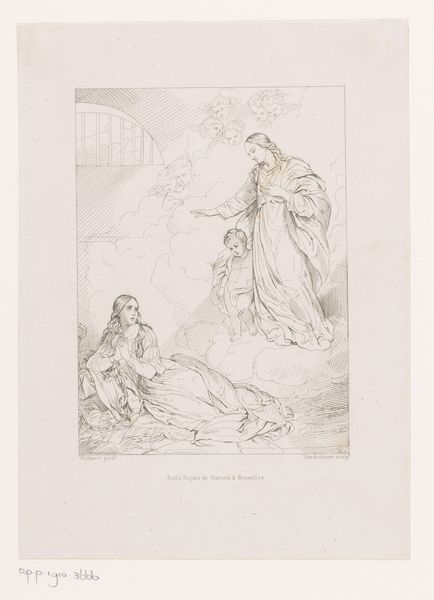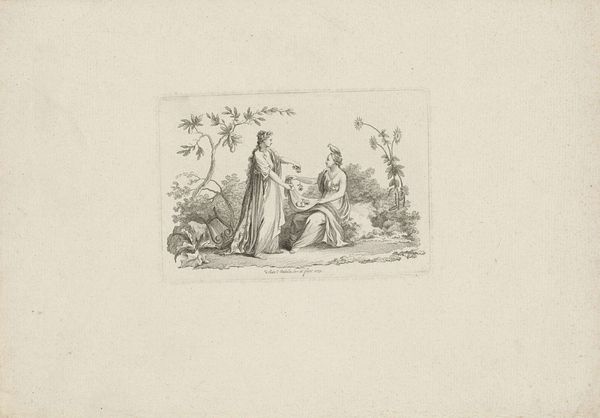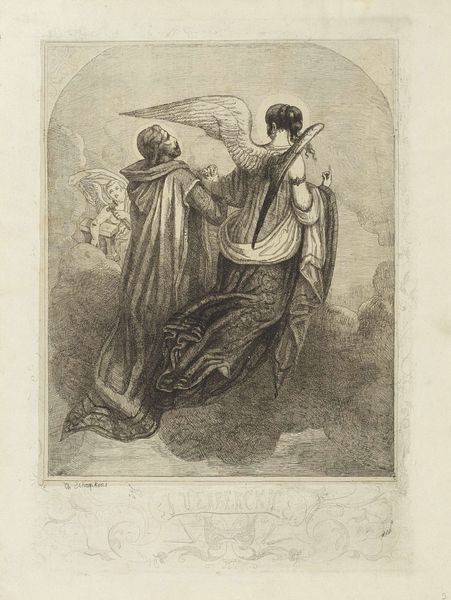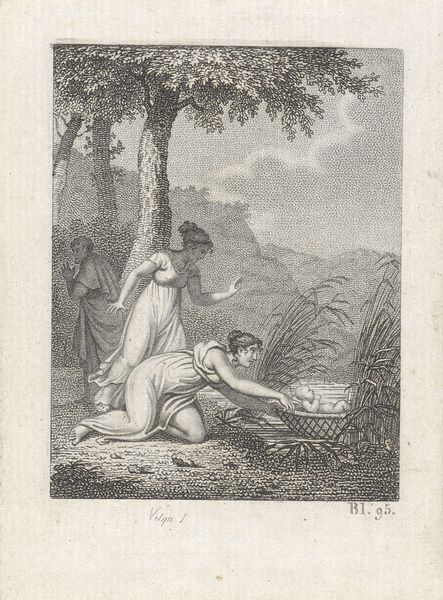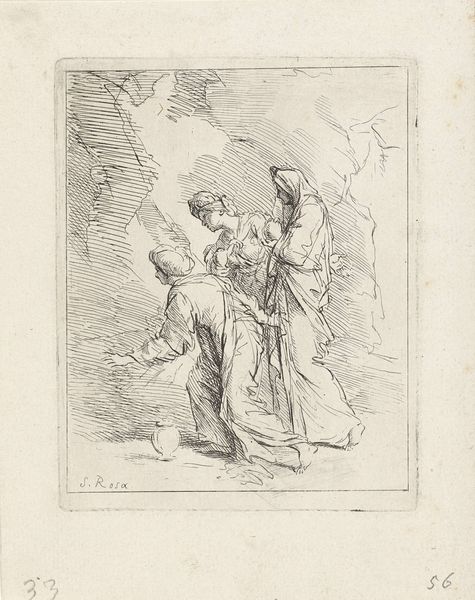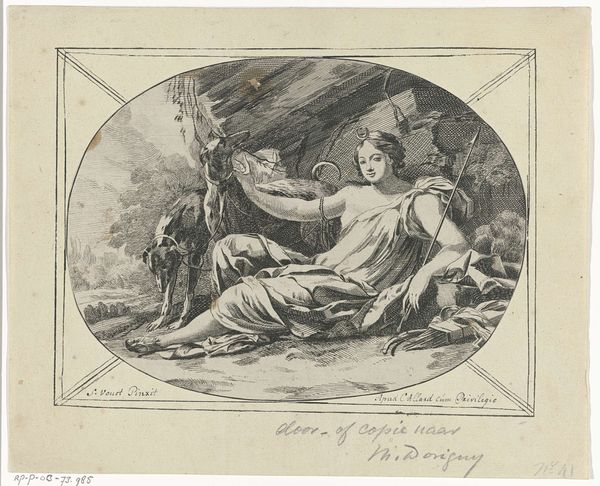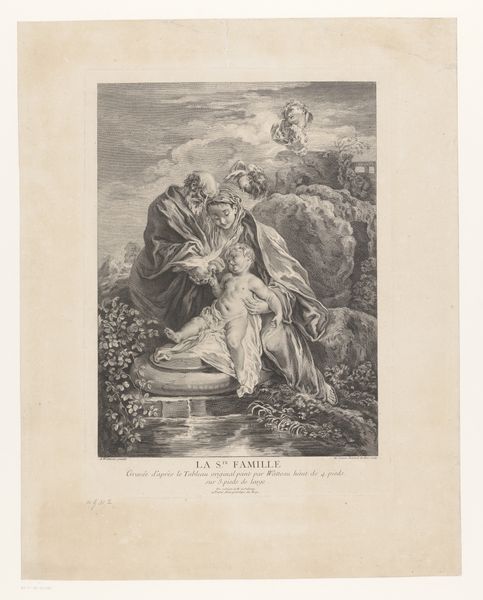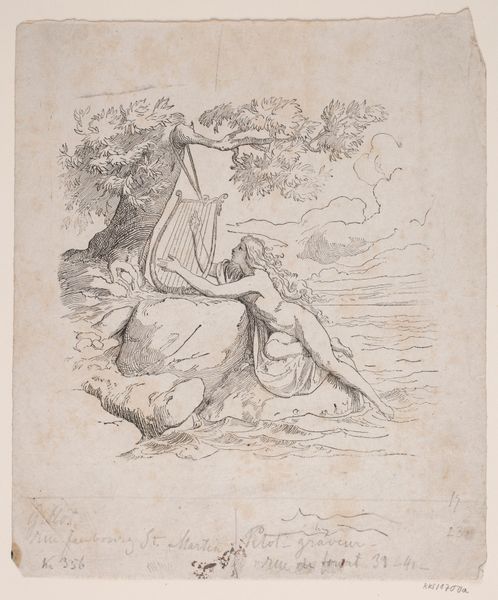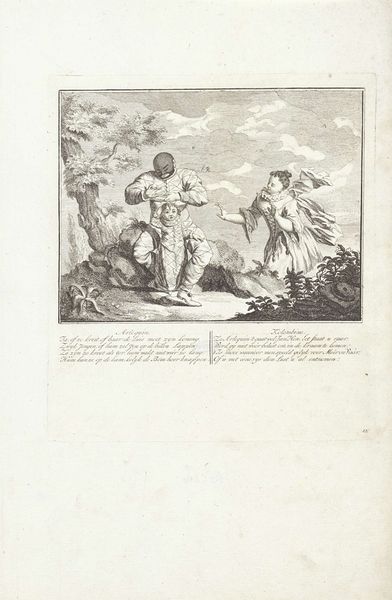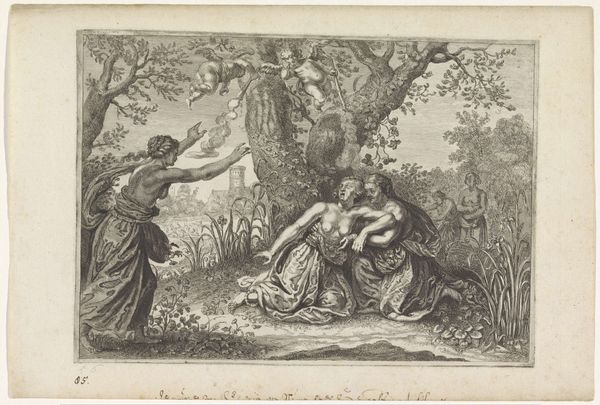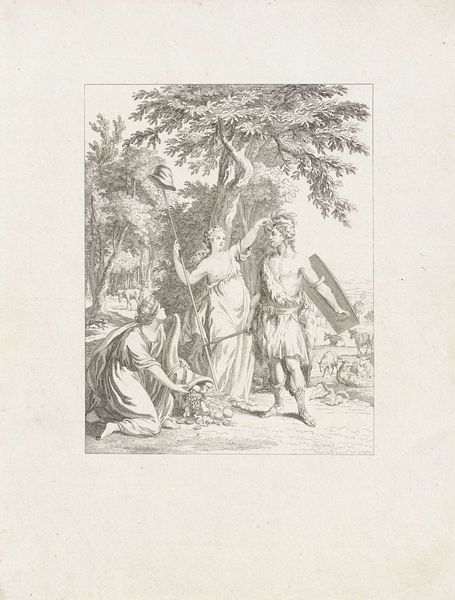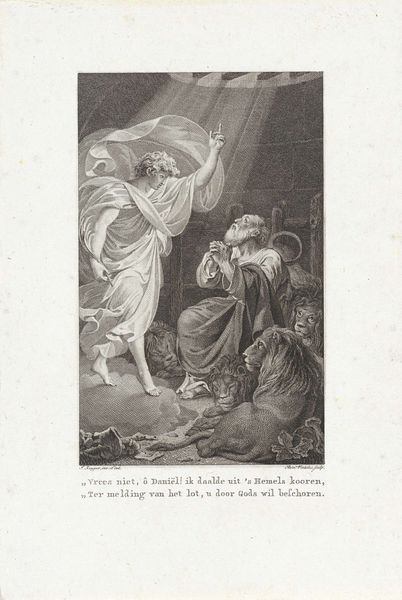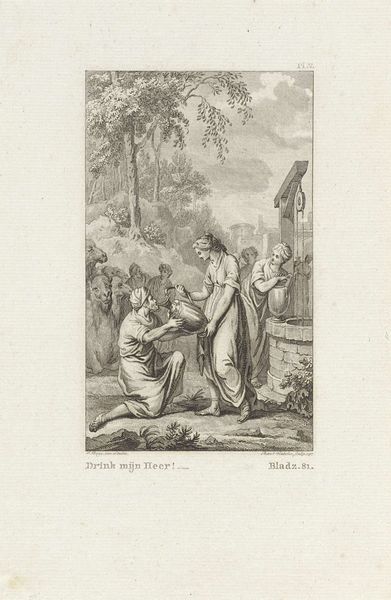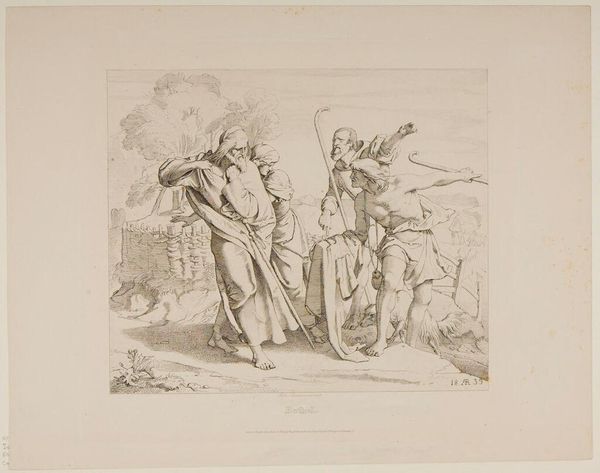
print, engraving
#
neoclacissism
#
allegory
# print
#
landscape
#
classical-realism
#
figuration
#
line
#
history-painting
#
engraving
Dimensions: height 332 mm, width 382 mm
Copyright: Rijks Museum: Open Domain
Curator: This engraving by Teodoro Matteini, dating from 1808, is titled "Napoleon helpt een vrouwelijke personificatie op te staan," or "Napoleon helps a female personification to get up." It presents quite the image! Editor: It does, doesn’t it? Immediately, I notice how spare the lines are. The stark whiteness of the paper becomes so prominent; almost feels like the weight of bleached linen or the surface of uncarved marble ready for tooling. Curator: Indeed. The style aligns with Neoclassicism. Matteini deliberately uses classical imagery to elevate Napoleon's image. The figures, dressed in togas, certainly evoke ancient Rome, while the allegorical female represents, likely, France, rising with Napoleon’s help after a period of turmoil. Editor: That’s interesting. I find myself pondering the means of its production as well. Considering that this is an engraving, it would require intense labor and specialized tools, and those lines have to be incredibly precise, etched meticulously. Do you think this precision has impacted the emotional temperature? Curator: Possibly. There's a sense of formality and control which mutes emotional expressiveness, especially common in propaganda. Consider the rays emanating from the sun—they focus attention on Napoleon, who is portrayed as an almost divine figure, a savior. The material's characteristics enable such idealization. Editor: Absolutely. Looking at the landscape, the barren hills also emphasize the labor of cultivating or building, a visible contrast to the potential offered by Napoleon, yet, simultaneously hinting at some recent damage or conflict from which this allegory is emerging. It's such a studied combination. Curator: Very true. It all ties into how art was being used at the time. Napoleon, of course, actively shaped his own image through art. Matteini's print participates in that broader political project. By connecting Napoleon to the glory of Rome, they tried to legitimizing his imperial ambitions. Editor: So, while it may appear simple on the surface due to its very medium and reliance on sparse lines, it's a concentrated narrative brimming with the labor of crafting and calculated image building. A curious juxtaposition. Curator: Indeed, viewing art like this, as a produced artifact loaded with social and political intent allows a more comprehensive understanding, revealing a history deeply etched in both the image and its method of manufacture.
Comments
No comments
Be the first to comment and join the conversation on the ultimate creative platform.
